$30 €30 VOUCHER: 40DLOI87
Enter code at checkout. Ends 11.59pm 1st Nov. Not valid on Soundpacks or 2024 Releases / Upgrades. Excludes other discount codes.
$30 €30 VOUCHER: 40DLOI87
Enter code at checkout. Ends 11.59pm 1st Nov. Not valid on Soundpacks or 2024 Releases / Upgrades. Excludes other discount codes.

18 Unique Instruments
Authentic Analogue Modelling
Kontakt Player NKS

Deep inside the history of synthesisers lurk some lesser known classics.
Not the Prophets, the Jupiters or the Minis, but their clumsy and quirky siblings. Analogue pianos, funky organs, glassy digital boxes, vocal synths, and string machines.
Now their time has come, as producers look for inspiration away from the usual clichés.
We have collected 18 such synths, lovingly modelled their sound and idiosyncrasies, and created a huge library of 450+ preset sounds to showcase all their power and nuance.
UPGRADE FROM ATTIC 1 €79 | $99
Existing users of Attic1 can upgrade, login to your account to see the offer.
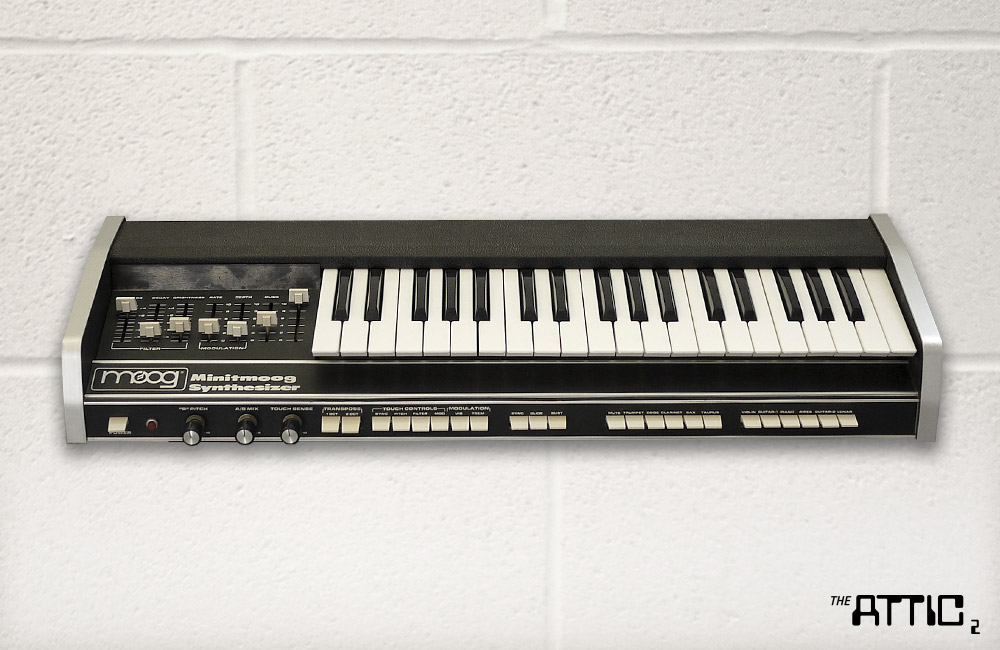
Very rare, this was the big brother of the more well known Moog Satellite. One unique feature was a metal touchplate above the faders for modulation effects. It has a number of preset tabs, in the same style as the more well known Roland SH2000, all of which we have sampled individually, on every key. It has a second de-tunable oscillator which really gives it an unstable raw quality which we love.
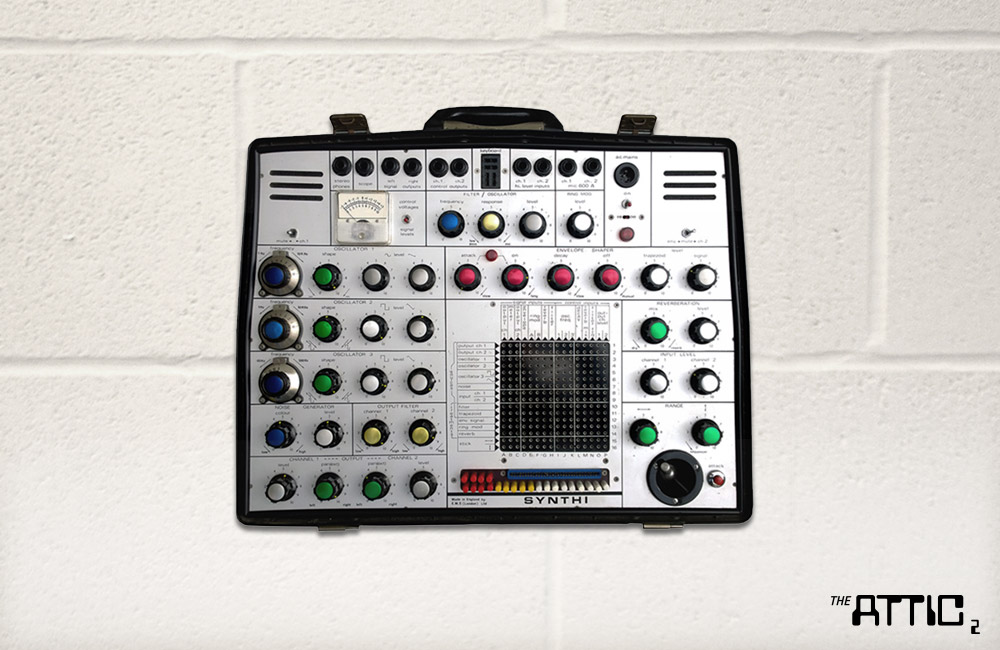
The EMS Synthi AKS is a legendary instrument with an illustrious history. First manufactured in 1972 by EMS in Putney, south-west London, The Synthi A was basically a portable version of EMS's famous VCS3 synthesiser, and the KS keyboard (an unplayable 30-note touchplate)was added to make the Synthi AKS. It cost £420.It was quickly adopted by the likes of Brian Eno and Pink Floyd, and has been used by experimental musicians ever since.
The Synthi has a unique patching system that uses a small patchbay grid. Each of the Synthis components appear as a source and destination on the patchbay, and by placing a pin into that x-y position, you can route the signal from one component to the other. This was a very effective way to make a powerful modular system very compact.
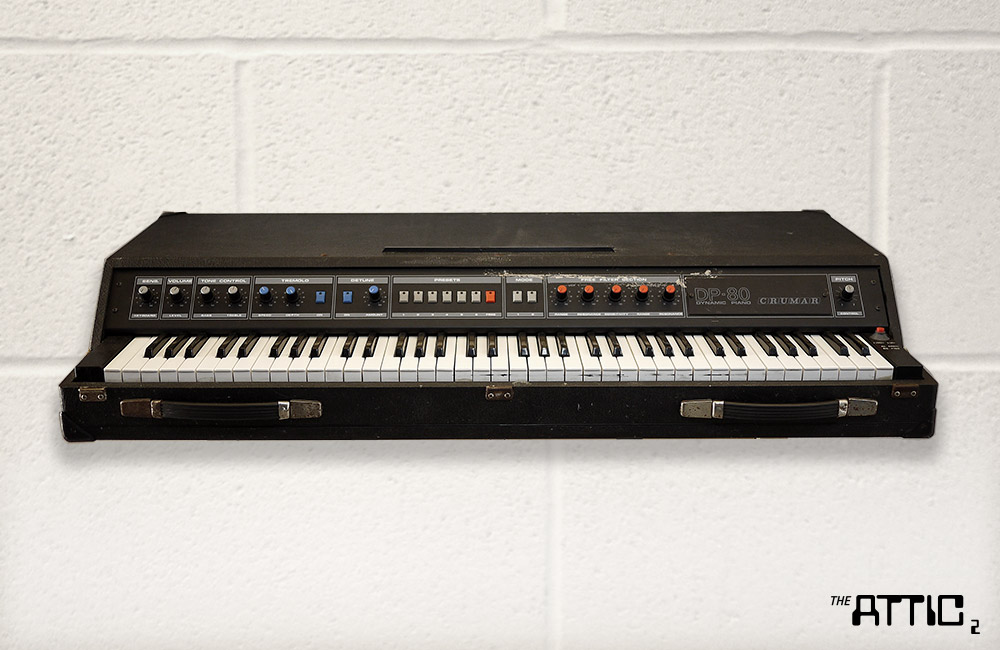
We sought out this 40kg Italian synth (extremely rare), and its smaller sibling the DP-50 because they are strongly rumoured to be favourites of Radiohead, principally used on the track ‘Everything in it’s right Place’ (albeit layered with another mystery synth).
An analogue rendering of an electric piano, it’s particularly interesting for it’s ‘Free Filter’ function, giving knobs for cutoff, resonance and envelope modulation for both it’s filters which can be flipped from a LP24 + LP24 to HP24 + LP24.
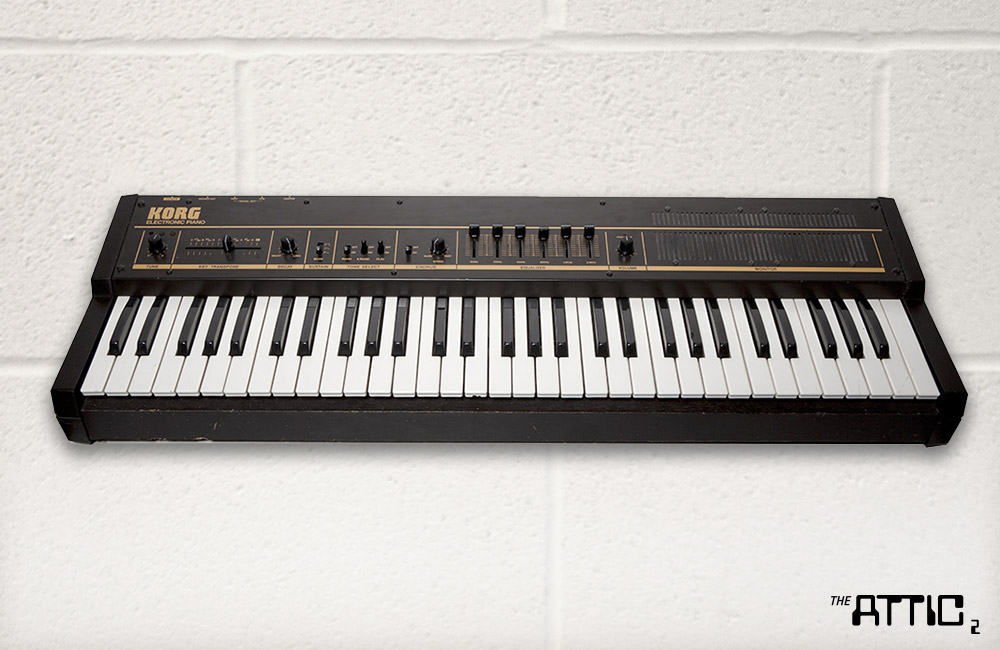
Korgs first ever electronic piano, the fuzzy, dreamy tones of the LP10 weren't strictly realistic, but with retro-spectacles
on it has a lot of charm. With Piano, Electric piano and Clav settings and a useful shaping EQ, but no velocity sensitivity.
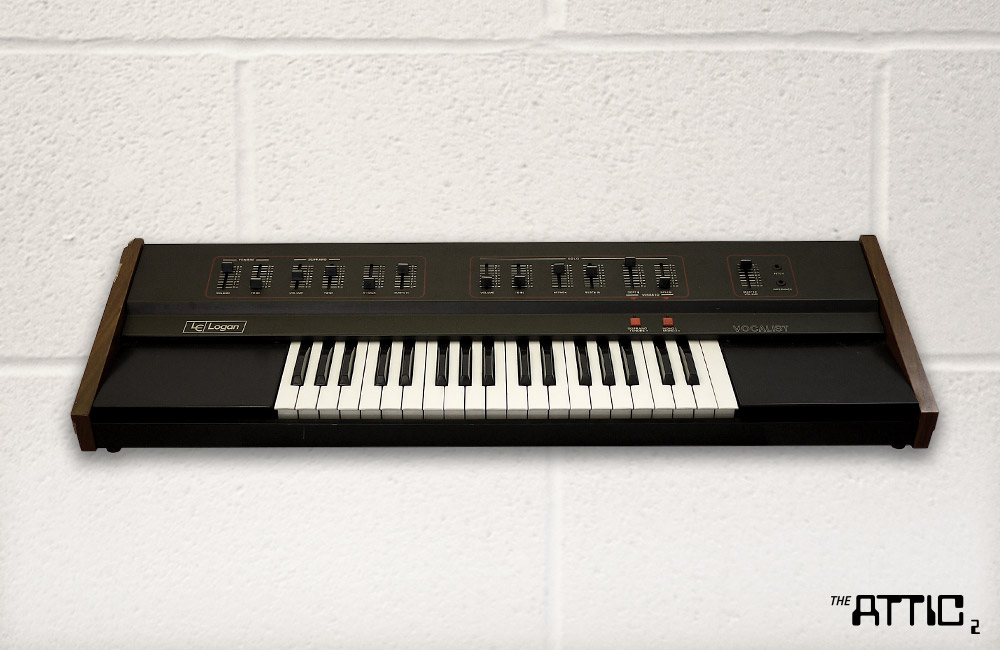
Made of pure Unobtanium, this is one of the most appealing synth concepts: an analogue choir. It generates Tenor & Soprano chorus voices with an extra solo section, all with their own sweepable formant filter. 6 notes of polyphony make this a truly classic instrument. Rumoured to feature on Oxygene by JM Jarre.
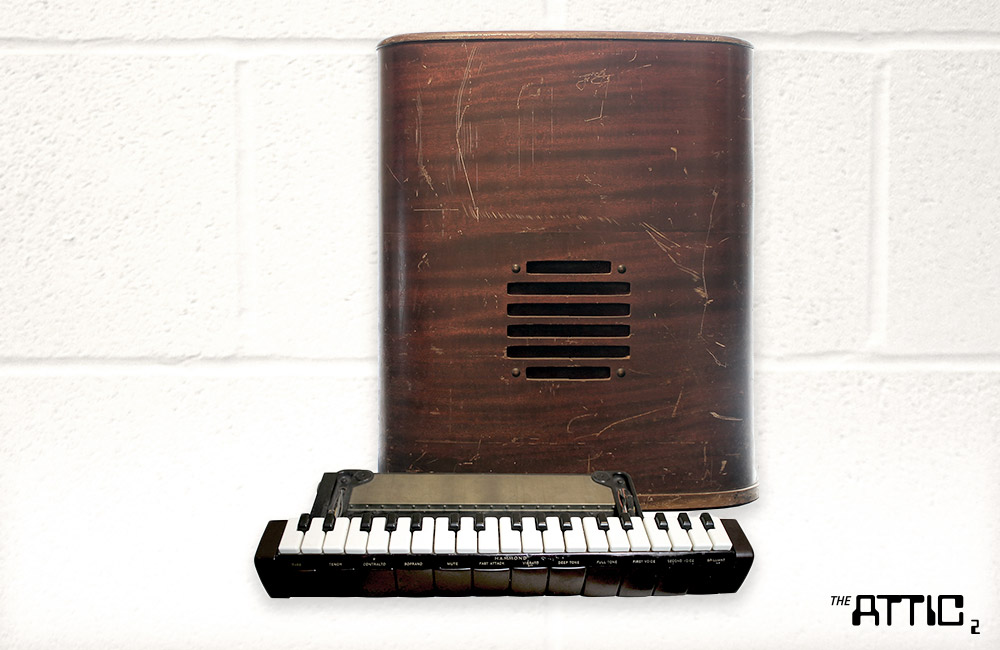
The USA precurser to the Jennings Univox, produced in Canada for Hammond by the Northern Electric Company, Ontario between 1940 and 1948.
A monophonic, valve driven keyboard instrument with a separate amplifier cabinet, the sound was derived from a single LC oscillator which had a frequency range of one octave.
The signal from the oscillator was then passed through a series of 5 frequency dividers to create a further two octaves.
On the front of the instrument there were a series of large thumb operated buttons for oscillator range (switch-able +/- 3 octaves: 'soprano', 'contralto', 'tenor', 'bass'), vibrato, attack time, 'deep tone', 'full tone', '1st voice', 2nd voice', 'brilliant' and a switch for selecting woodwind, string sound or mute.
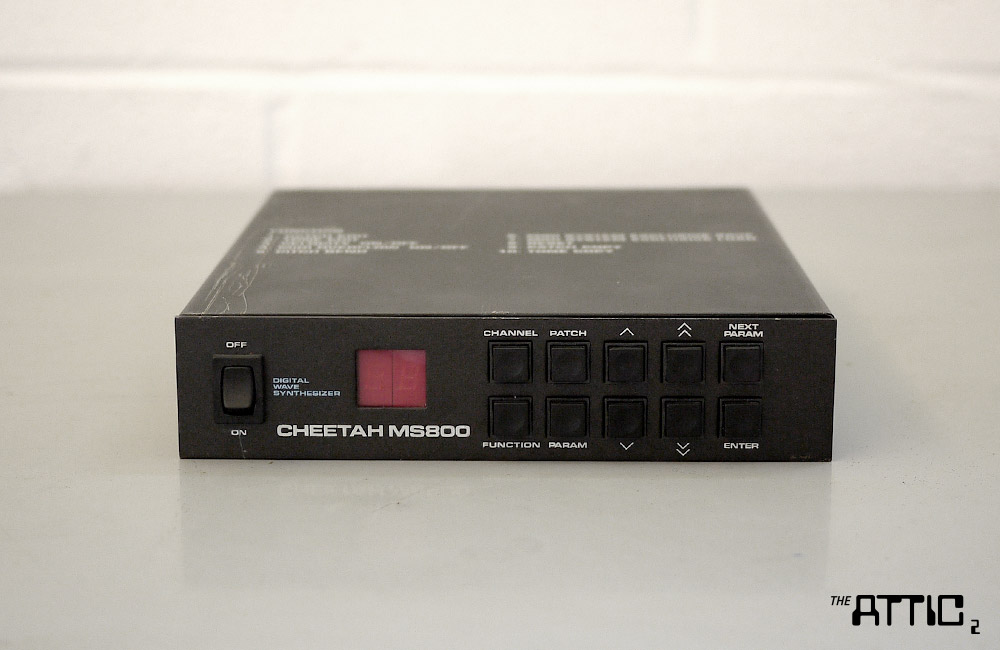
Recently popularised by that elusive Aphex Twin on his Cheetah EP, this is a sample-based 80s oddity. Famously hard to program, largely due to it being a small featureless black brick, it has a very appealing sonic character, with buzzy aliased tones contrasting with ambient phasey LFO type effects.
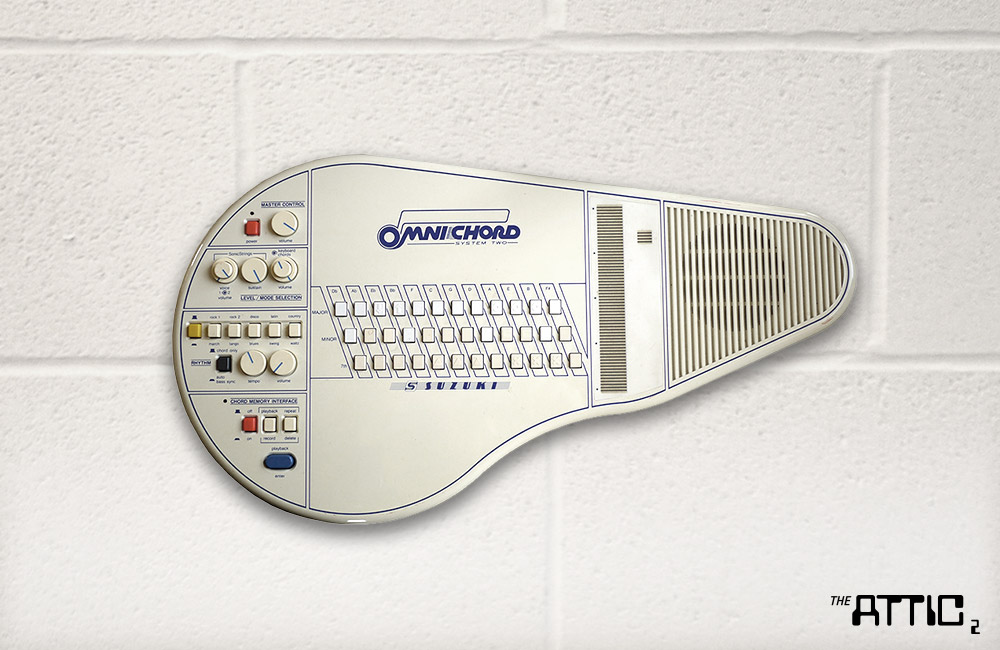
Introduced in 1981 and manufactured by the Suzuki Musical Instrument Corporation, It typically features a touch plate,
and buttons for major, minor, and diminished chords. This unit (belonging to Neil Davidge of Massive Attack) is a ‘System Two’,
and it has a great synth tone, which sounds ‘cheap’ in all the right ways.
You can mix two different tones, one straight, and one modulated with a basic LFO.
While not sounding much like a plucked string, it does have a pure character all its own, which won it many fans, such as Daniel Lanois and Brian Eno.
This Omnichord unit loaned by Neil Davidge from Massive Attack.
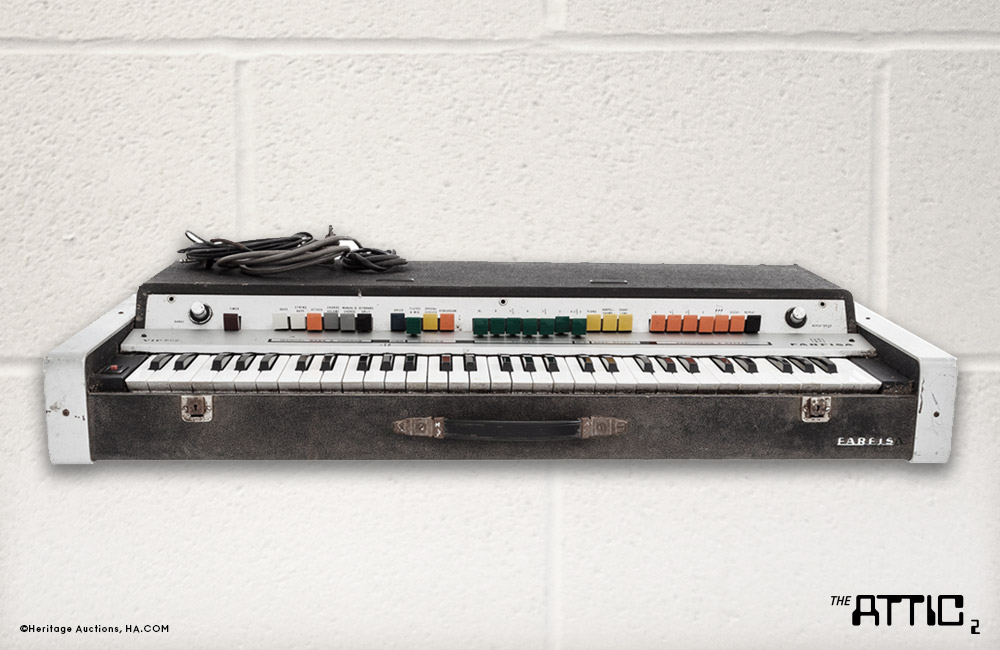
A single keyboard version of the VIP series (which, lets face it, looks much cooler), which was produced throughout the 1970s. It features ’Syntheslalom’, a portamento /Glide function not usually found on organs.
With flute, piano, harpsichord and percussion voice sections it has a vivid day-glo sound that seems infused with vintage polaroid sunlight.
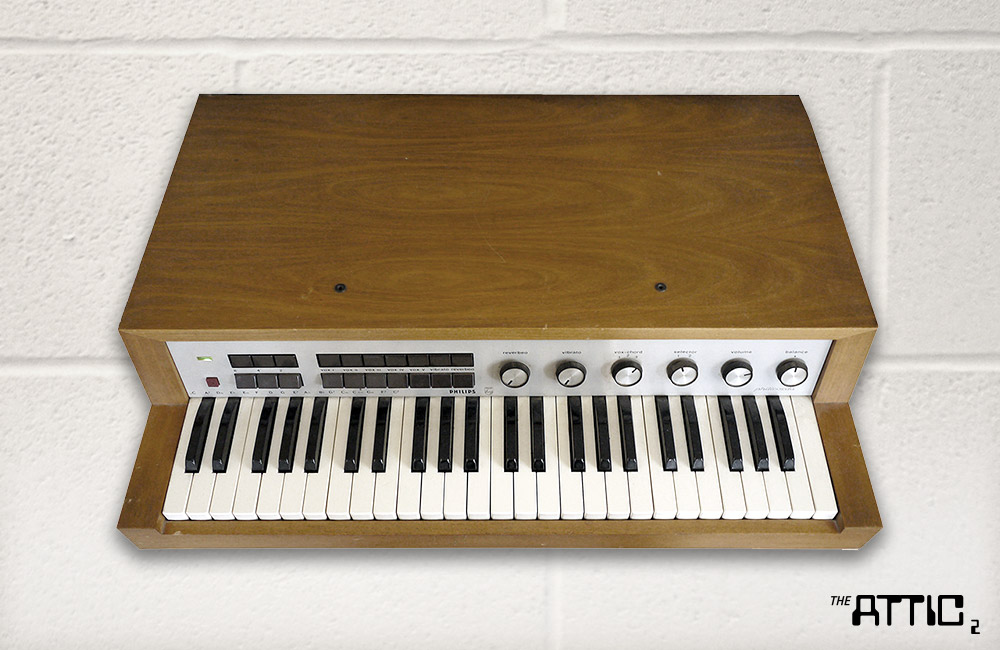
A brilliant 60s transistor organ with a built in spring reverb - replicated in The Attic instrument as convolution reverb. The instrument has a vibrato and 5 switchable stops. There is also an extra ‘voxchord’ setting, which splits the lower half of the keyboard into single-key chords, for left hand accompaniment.
It has a thick, smooth sound that can give just the right atmosphere to certain productions.
Philicordas have recently used on records by Adele and others.
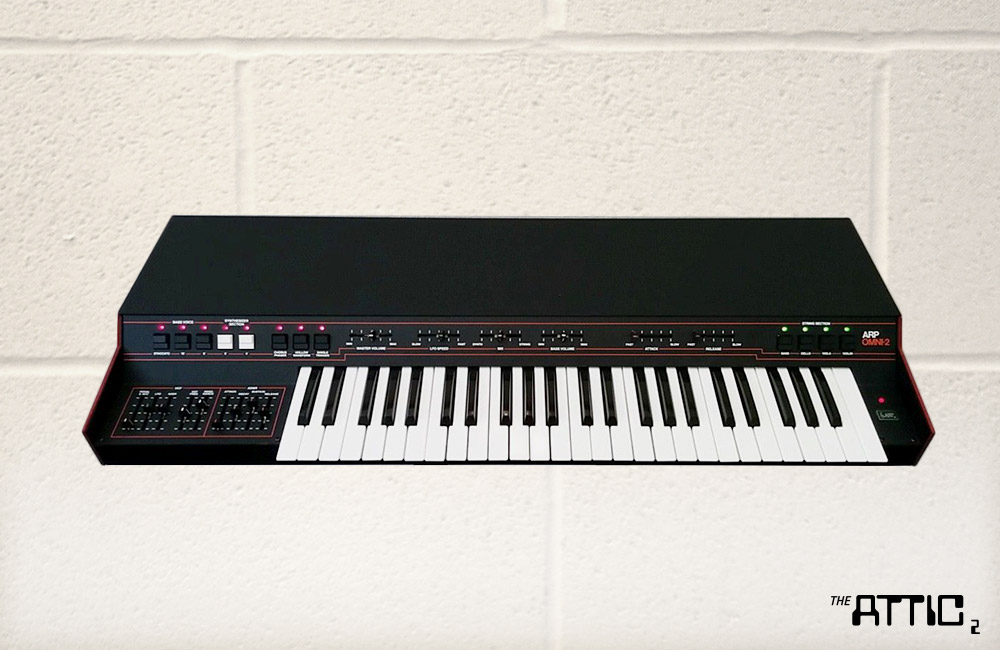
A Joy Division workhorse, this synth can be heard across a number of their records, from the famous string line on ‘Love Will Tear Us Apart’ to various pad and bass sounds including ‘Heart & Soul’ and ‘Atmosphere’.
It is not a straight string machine because in addition to the string sounds it has a simple monosynth section which can be crossfaded with the strings or used solo. Famously unreliable, ours misbehaved a lot while sampling it.
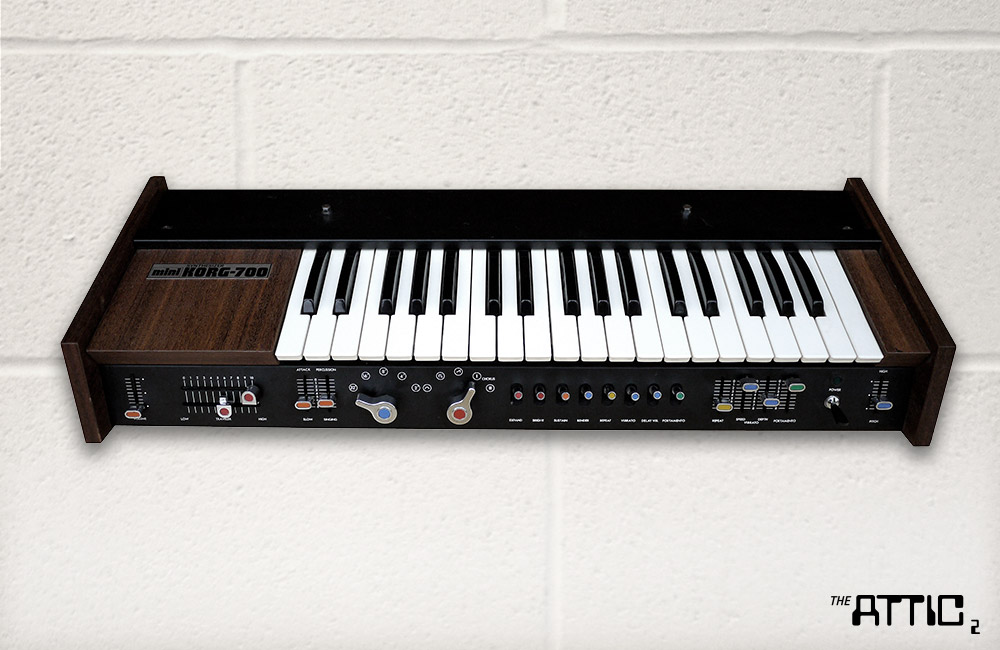
A simple monosynth by Korg from 1974, the same era as the Minimoog and the Roland SH2000.
It has semi-fixed parameters, with a selection of toggle switches offering limited editing of these. It has a very fat, zappy sound
and fantastic chunky coloured controls. The filter (Traveler) is particularly interesting, with a LPF and HPF semi linked by interlocking faders.
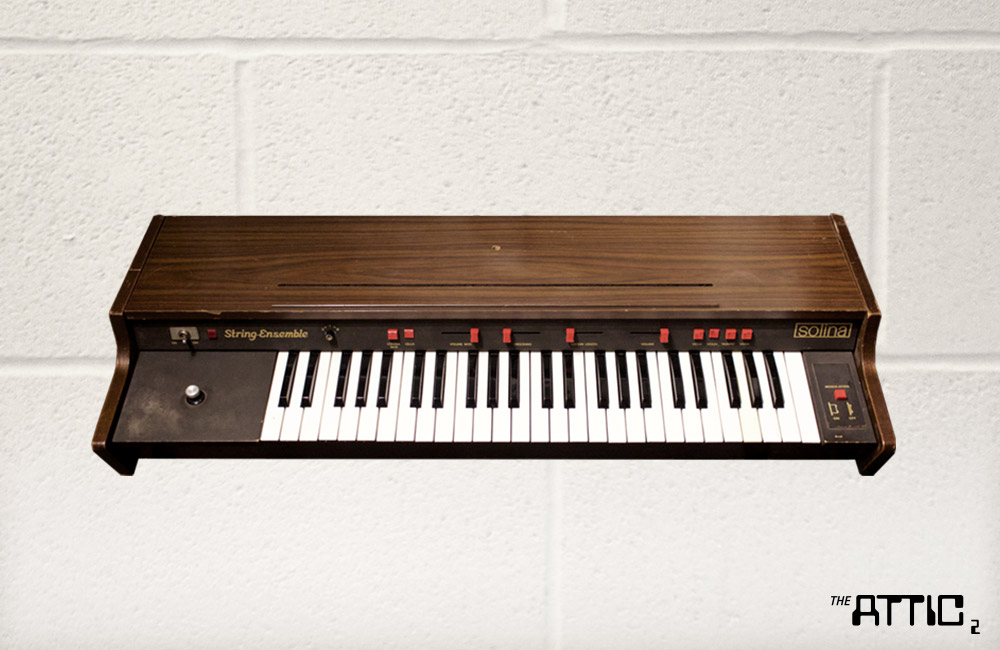
An earlier pre-ARP model of the famous string synth, made by Eminent. It has Violin, Viola, Trumpet, Horn, Cello and Contra-Bass sounds, and a lush analogue chorus effect. Used by too many to mention!
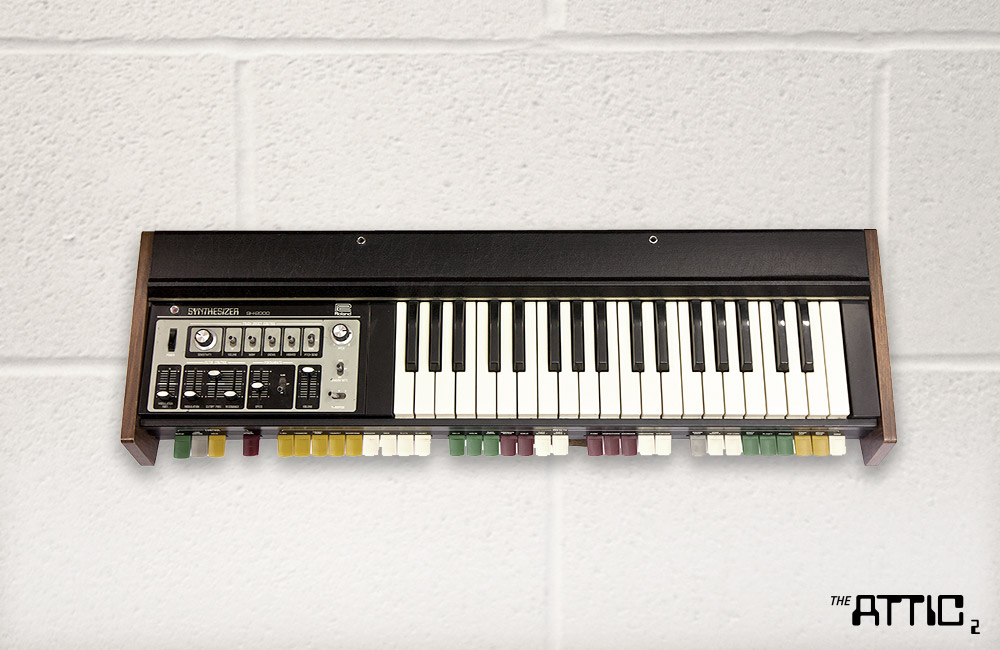
The second synth ever produced by Roland (after the sh1000), it was designed to sit on top of a home organ to provide additional sounds.
To that end, it is based around presets which are selected by a series of brightly coloured paddle-switches,
and sounds very fat and characterful indeed. Basic filter and LFO controls are present, as well as growl and wow effects, which can be linked to aftertouch to give great performance potential.
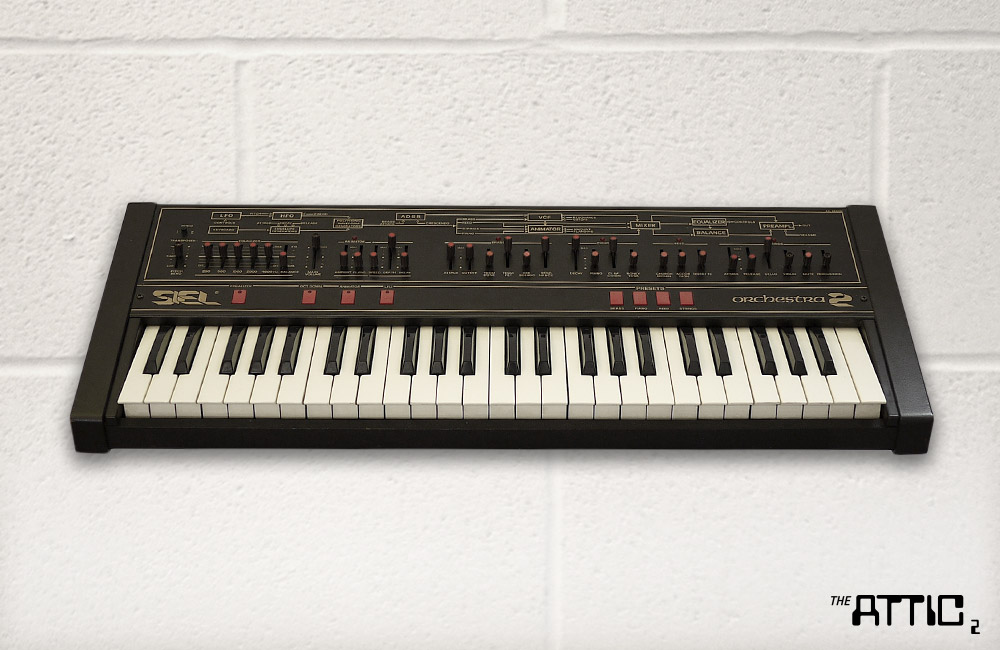
We were tipped off about this underated classic by Adrian Utley, who told us it’s a favourite for Portishead - you can hear it on the arpeggiated line on ‘The Rip’. It’s a sort-of string machine with added zappy brass voices, organs and pianos - very characterful and versatile. ARP sold the original Orchestra 1 in the US as the ARP Quartet.
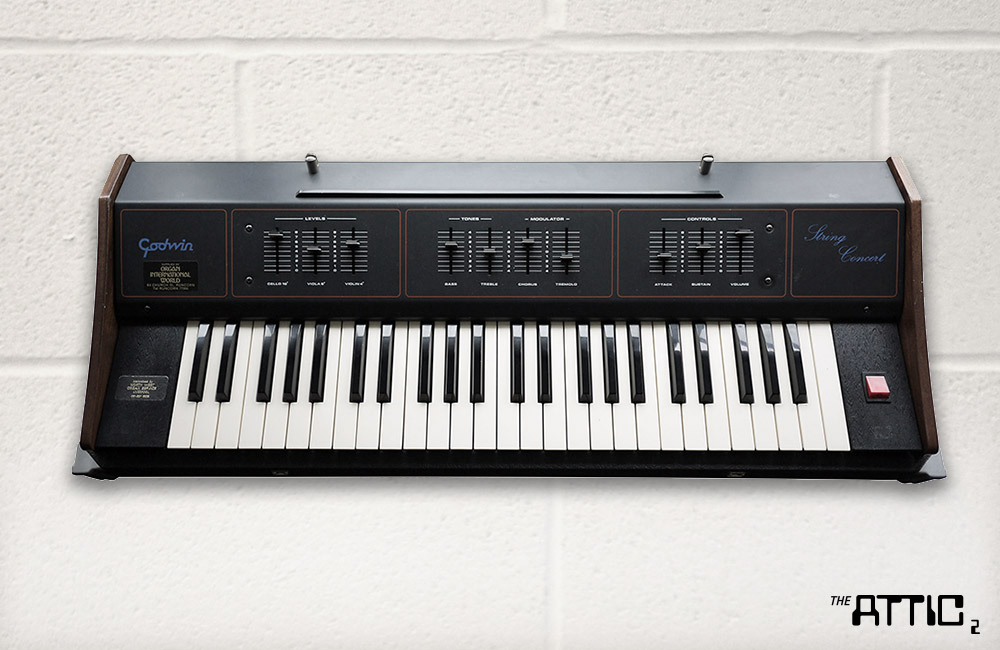
Little known compared to the RS202 and Arp Omnis etc, but in fact this string synth has one of the most lifelike string sounds you will hear from an analogue synth.
Manufactured in Italy by Sisme, it has 49 keys, 3 string sounds - Cello 16 / Viola 8 / Violin 4; controllable by faders.
Its chorus and tremolo are particularly unique, adding a fabulous shimmer to the sound.
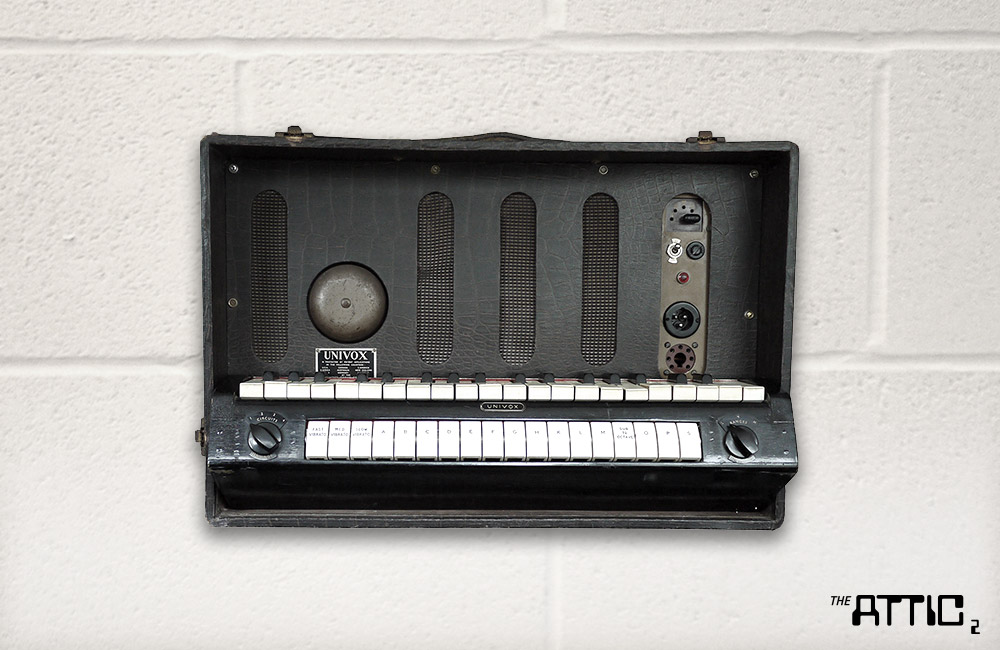
Dating from 1951, and a true oddity. The first electronic venture for Tom Jennings who later went on to create Vox amplifiers AC15, AC30 etc.
The Univox was used by the Beatles during their early Cavern days in Liverpool and can be heard on Telstar by the Tornados.
In about 1951/1952 the Univox took off in a big way due to its competitive price and Tom's country wide marketing program.
The first version was the J6, single keyboard model, later followed by the J10 with two rows of Tone & effect tabs.
All models were supplied with metal screw-on clips, to fasten it under the right hand side of a piano.
Later we designed an adjustable chromed stand that enabled the user to do gigs in other locations with out having to screw on fixing brackets each time.
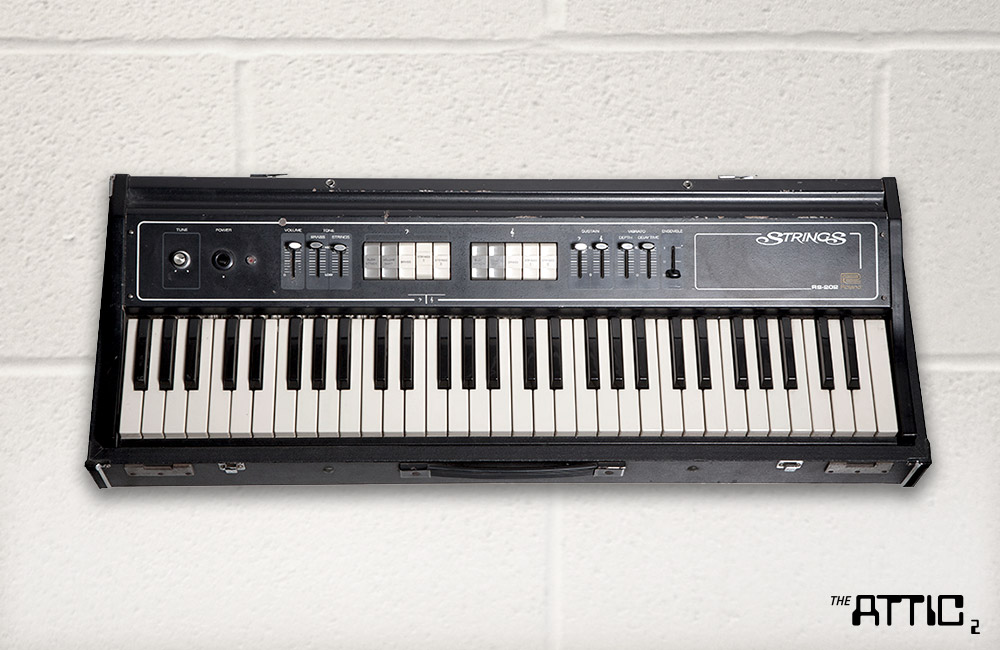
Dating from 1976, the RS202 is 61 note polyphonic, with Strings I, Strings II and Brass
sound sources, and a split keyboard - any sound could by assigned to either section of the keyboard.
The ensemble chorus effect was a key part of the sonic signature, contributing to its classic, fizzing disco string sound.
The RS202 is an all time classic string machine.
There is an old rule of thumb when sampling synths: record two keys per octave, and that will be enough.
We don't buy into this; with a 40 year-old synth, each key comes with its own response, its own tuning discrepancy, its own quirks.
The more you sample, the more detail you capture. The more notes you record, the more character you will get.
We sample EVERY key.
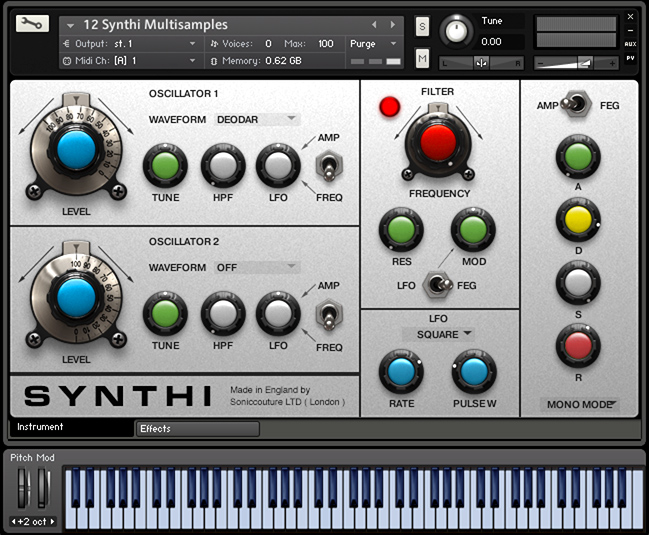
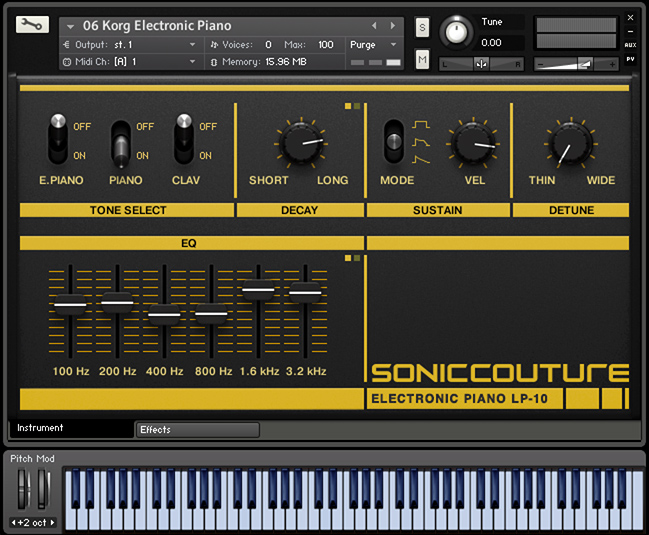
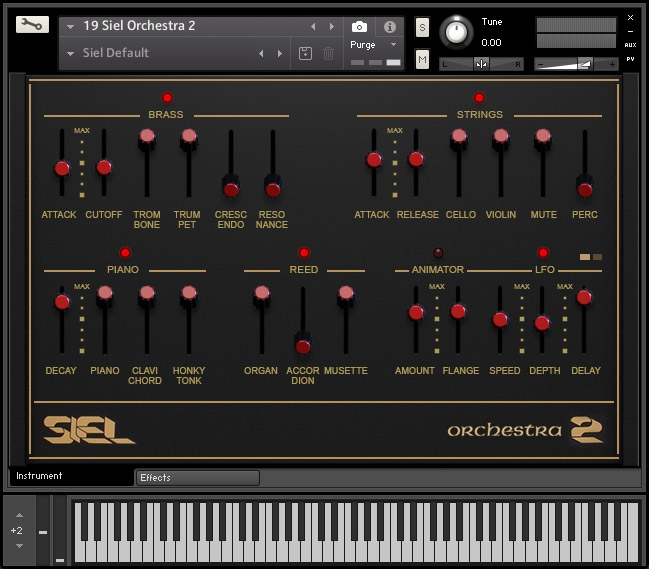
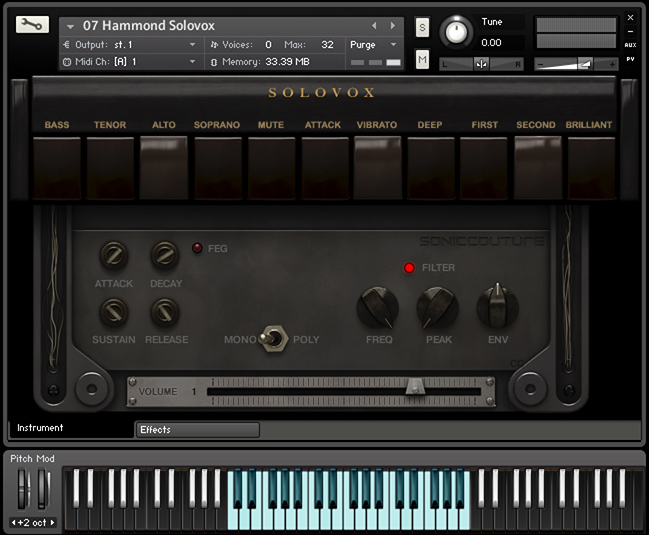
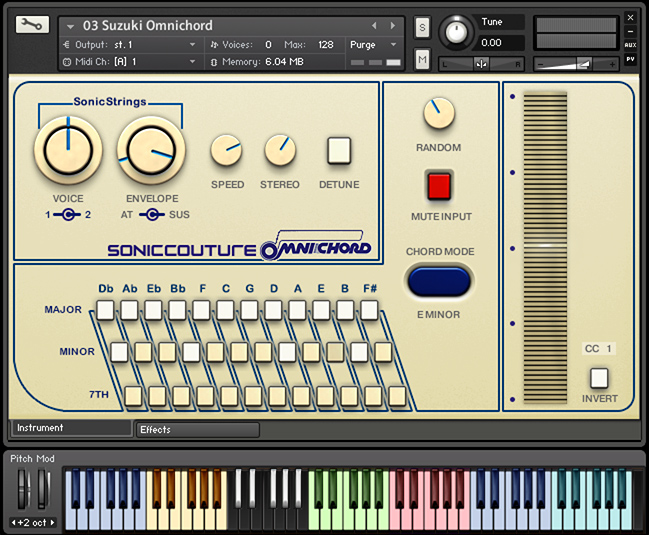
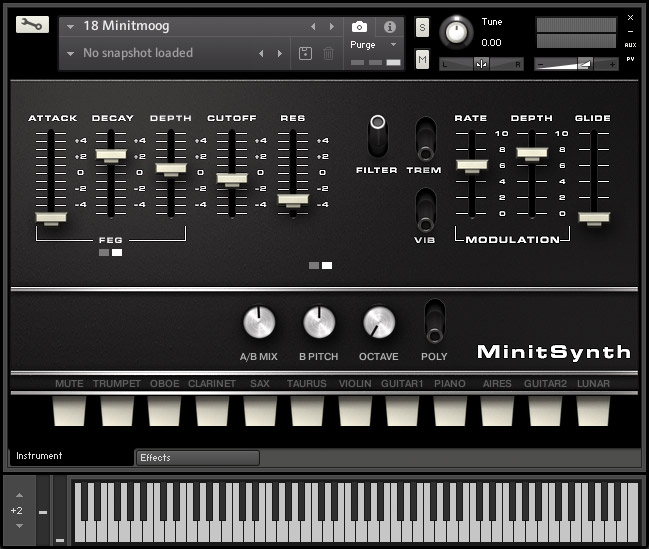
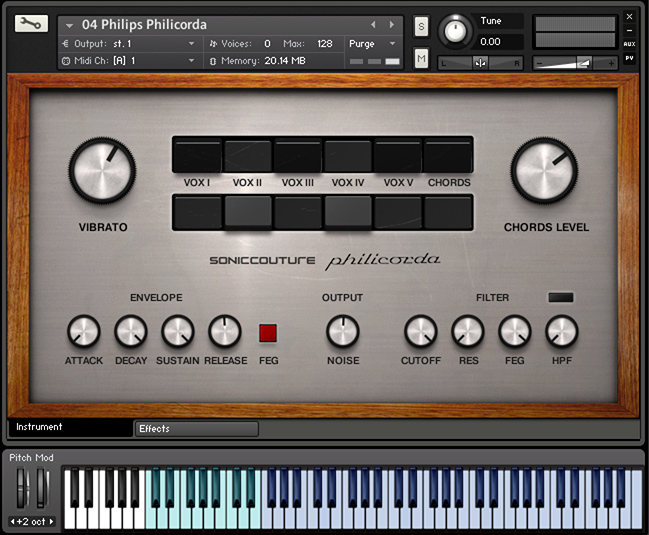
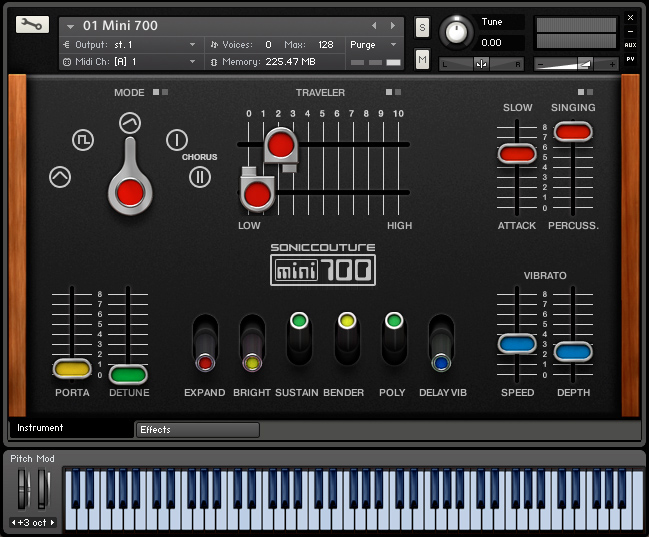
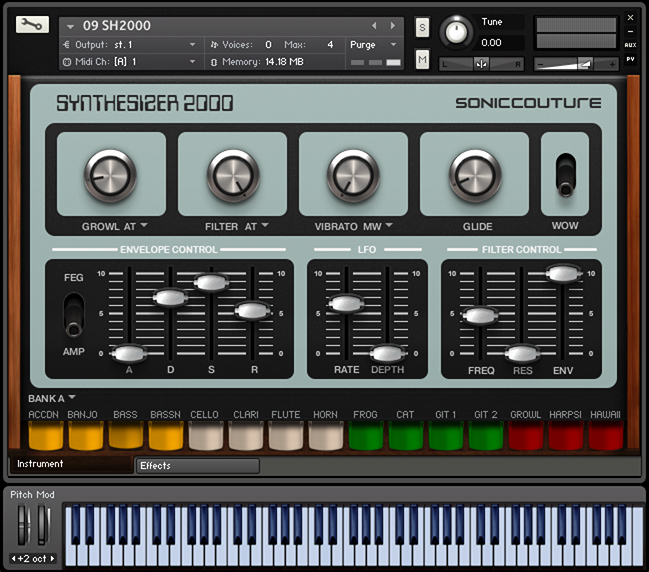
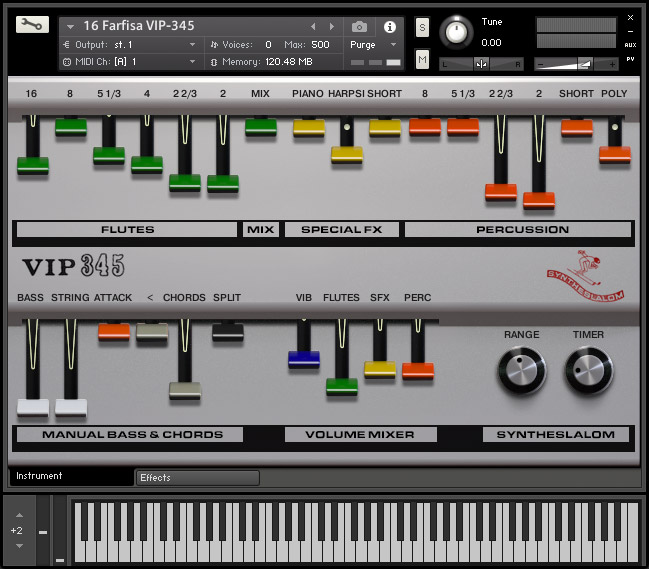
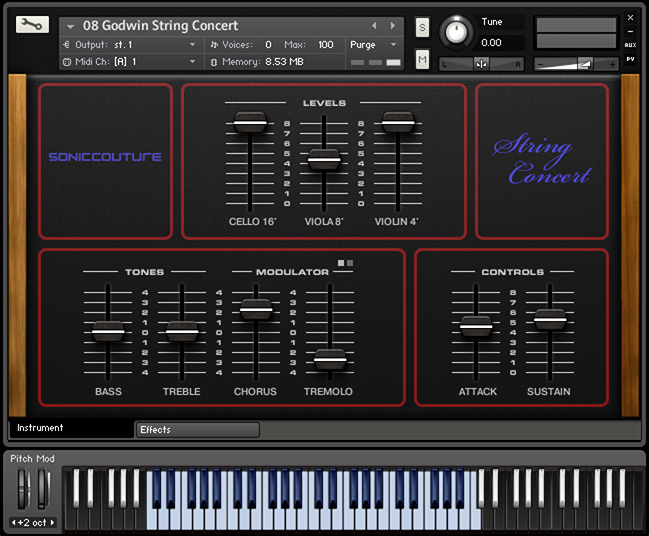
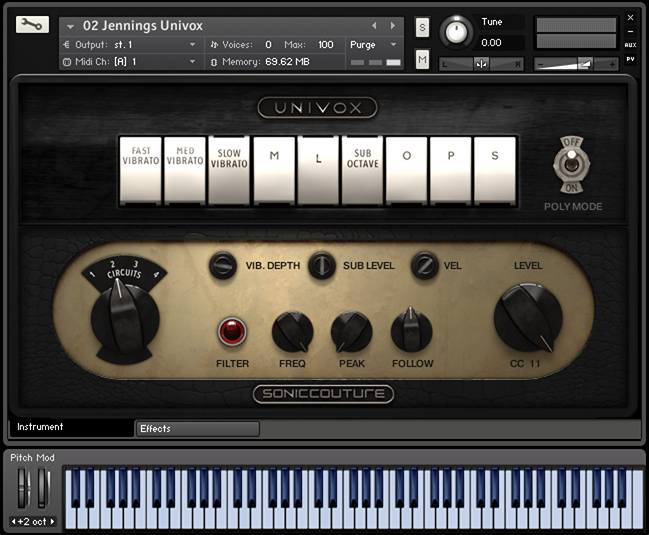
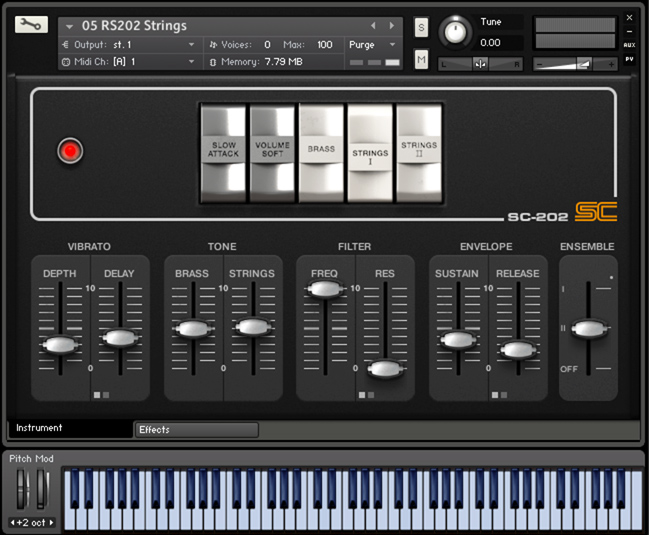
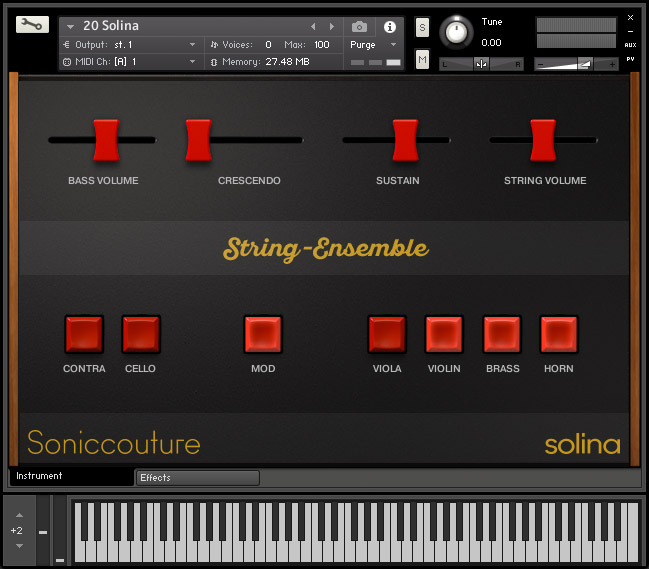
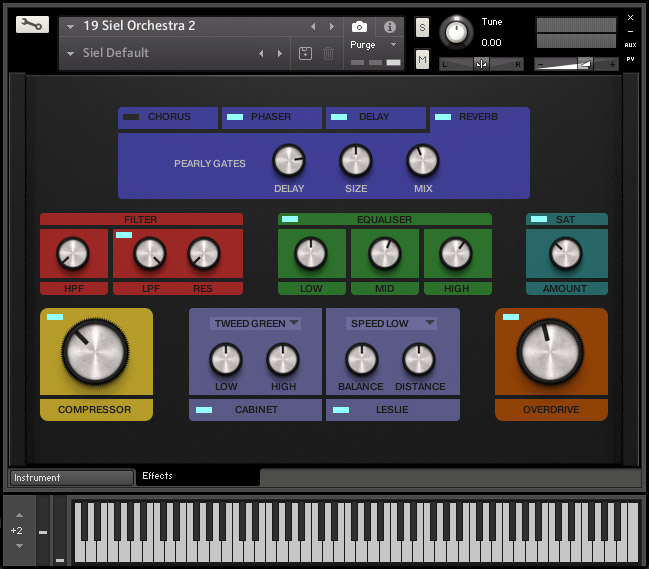
Each Attic instrument shares the same effects console. Utilising Kontakt's premium processors, it is designed to offer a wide range of options, from convolution reverbs featuring authentic impulse responses taken from the Synthi AKS and Philicorda spring reverbs, to compression and cabinet modelling.
| Product Details |
|---|
Instruments
New in Attic 2:
|
Library specifications:
|
Kontakt Player + NKS compatible. Requires Kontakt 5.7.3 |

This is a Kontakt Player instrument. This means that you do not need to own the full version of NI Kontakt to use it. It will run as a plug-in instrument in any VST/AU/RTAS/AAX/WASAPI,compatible host program or DAW eg: Cubase, Logic, Ableton Live, DP, Reaper, Pro-Tools. No extra purchase necessary.
System Requirements:
Windows 7 or higher (latest Service Pack, 32/64 Bit), Intel Core Duo or AMD AthlonTM 64 X2, 4 GB RAM (6 GB RAM recommended)
Mac: OS X 10.9 or higher, Intel Core 2 Duo, 4 GB RAM
Requires KONTAKT 5 or KONTAKT 5 PLAYER version 5.7.3 or later

A funk icon. The Hohner D6 Clavinet, sampled in state-of-the-art detail.
A completely authentic playing experience, with modelled preamp EQs, seperate pickups, release samples, wah-wah and more.
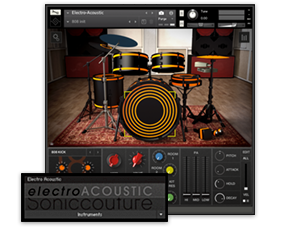
Vintage drum machines: detailed multi-mic studio recordings with a unique collection of beat tools.
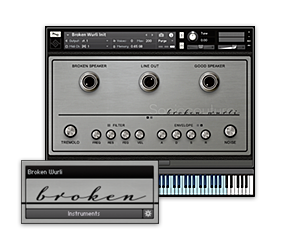
Dusty and tatty, as a Wurli should be. And with a broken built-in speaker. So, we sampled that too.
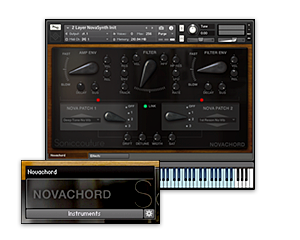
The worlds' first synthesiser: 163 vacuum tubes power this 72 note polyphonic 500lb beast. Ethereal, ancient yet modern - the future sound of 1939.
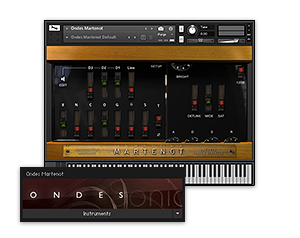
One of the most enigmatic musical instruments of the 20th century, The Ondes Martenot was invented in 1928. Ghostly, languid, unmistakably French ; it has graced film soundtracks and avant-garde music for over 80 years.
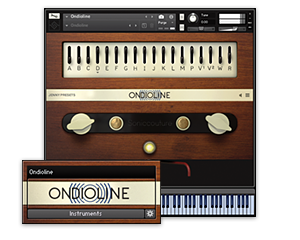
French Monosynth from the 1950s. Similar to the Clavioline, Univox, etc, this is the Daddy of them all.
Register And Receive An Exclusive Discount Code
Valid email address required.
Code applies to all full price products. Does not apply to existing discounts or upgrades. Code shown in user account.